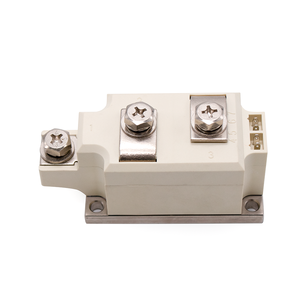Thyristors Online | High-Quality Power Semiconductors
**”The Two-Way Titans: Unleashing the Power of Bidirectional Thyristors”**
(Bidirectional Thyristors: Characteristics and Applications)
Imagine a tiny electronic component that can control massive amounts of power, switching it on and off with precision, all while handling currents flowing in both directions. Sounds like something out of a sci-fi movie, right? Well, meet the bidirectional thyristor—a real-world marvel that’s quietly revolutionizing the way we manage electricity in everything from household appliances to industrial machinery.
Bidirectional thyristors, often referred to as TRIACs (Triode for Alternating Current), are the unsung heroes of modern electronics. Unlike their unidirectional cousins, which only allow current to flow in one direction, these two-way titans can handle alternating current (AC) with ease. This unique ability makes them indispensable in applications where power needs to be controlled in both directions, such as dimming lights, regulating motor speeds, or managing heating elements.
So, what makes these devices so special? Let’s dive into their characteristics. Bidirectional thyristors are essentially two thyristors connected in parallel but in opposite directions. This clever design allows them to conduct current when triggered, regardless of the polarity of the voltage. They’re like the ultimate traffic cops of electricity, directing the flow seamlessly in both directions. Plus, they’re incredibly efficient, with low power losses and the ability to handle high voltages and currents. This makes them perfect for high-power applications where reliability and performance are non-negotiable.
But the real magic lies in their versatility. Picture this: you’re sitting in a cozy room, adjusting the brightness of your lamp with a simple twist of a dimmer switch. That smooth transition from bright to dim? Thank a bidirectional thyristor. These devices are the backbone of AC phase control, allowing precise regulation of power delivery. They’re also the driving force behind variable-speed motor controls, ensuring your washing machine, fan, or power tool operates at just the right speed.
In industrial settings, bidirectional thyristors are the workhorses of power control. They’re used in everything from welding machines to temperature controllers, where precise and reliable power management is critical. Their ability to handle high currents and voltages without breaking a sweat makes them ideal for heavy-duty applications. And let’s not forget their role in renewable energy systems, where they help manage the flow of power in inverters and converters, ensuring that solar panels and wind turbines deliver energy efficiently to the grid.
But it’s not all about raw power. Bidirectional thyristors are also incredibly compact and cost-effective, making them a favorite among engineers and designers. Their small size and simplicity mean they can be integrated into a wide range of devices without adding bulk or complexity. And because they’re so reliable, they help reduce maintenance costs and downtime, which is a win-win for both manufacturers and consumers.
In a world increasingly driven by smart technology, bidirectional thyristors are stepping up to the plate. They’re at the heart of IoT-enabled devices, enabling seamless communication and control between appliances and smart home systems. Imagine a future where your entire home operates in perfect harmony, with lights, heating, and appliances all working together to create the perfect environment. That future is powered by bidirectional thyristors.
(Bidirectional Thyristors: Characteristics and Applications)
So, the next time you flip a switch, adjust a thermostat, or marvel at the efficiency of a modern appliance, take a moment to appreciate the unsung hero behind the scenes—the bidirectional thyristor. It may be small, but its impact is anything but. These two-way titans are quietly shaping the future of power control, one electron at a time.


